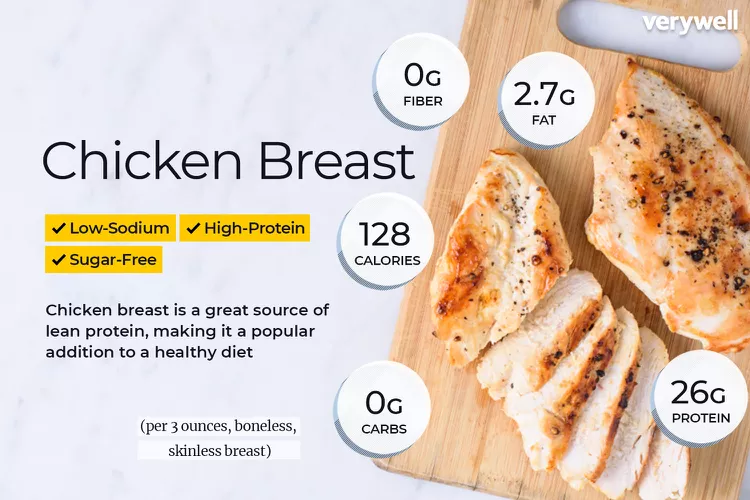So then, what about the average weight of chicken breast in grams? And, for that matter, what are we talking about? Are we talking about the average weight for a whole chicken breast or just one half of a chicken breast? Well, it turns out that both are pretty good numbers to know. In fact, you might even be surprised to learn that there is such a thing as an average weight for a whole chicken breast. That’s because most people tend to think of these cuts of meat as being relatively straightforward and simple. After all, if you’re trying to figure out how much something is going to cost you at the butcher counter and all they ask you is whether you want a whole or half-chicken breast then chances are pretty good that there isn’t much more information available to you. You would need quite a bit more information than just asking whether or not these two things cost the same!
Maryland (leg) 90 g (3.2 oz)
Oops! Click Regenerate Content below to try generating this section again.
Chicken wing 18 g (0.63 oz)
Chicken wings are a popular part of the chicken, and come from the lower portion of the bird’s forelimb. Chicken wings are a meaty part of the bird, and they can be used in many recipes.
Chicken back 115 g (4.1 oz)
The chicken back is an alternative to the breast. It contains less fat, but it’s a good source of protein and iron. The chicken back is also comparable in calories to the breast and has an even lower amount of cholesterol. This cut can be grilled or baked, but it does not have as much flavor as other cuts.
In countries such as China, where food safety standards are lower, this cut can be used for soup stock because it has more gelatin than other parts of the chicken
Chicken wingtip 12 g (0.42 oz)
The chicken wingtip is the most tender part of the chicken wing. The whole wing is made up of three bones: two main bones (the humerus and ulna) and one bone in each side called a metacarpal. The meat on these three bones is white meat, while other parts of the chicken are dark meat.
The pectoralis minor muscle makes up part of this area as well as being one of several muscles that make up your chest/arm area.
In order to get an idea about how much weight it weighs, we can look at other pieces of food that are similar in size such as mushrooms or peas for example!
Roasting joint 100–180 g (3.5–6.3 oz)
If you’re not sure how much weight your chicken needs, the easiest way to figure it out is by looking at the label on the packaging. If this information isn’t provided, then you’ll need to do a little math. First, measure your whole chicken and see how many grams/ounces it weighs. Then multiply that number by three (because there are three breasts in every chicken).
The average weight of a chicken breast starts at 300 grams/10 ounces and ranges between 350 to 400 grams/12–14 ounces.
Smoked fillet 100–140 g (3.5–4.9 oz)
There are many ways to prepare smoked fillet. It is often used in sandwiches or salads, and can be found in chicken casseroles. Smoked fillet is easy to prepare and cook. It may be served cold, but it can also be frozen for up to 2 months.
For example a chicken breast would weigh about 300 grams/10 ounces, and whole chickens average about 1 kilogram/2 pounds
For example, a chicken breast would weigh about 300 grams/10 ounces, and whole chickens average about 1 kilogram/2 pounds.
In contrast to chicken wings, which have an uneven shape and are often used in recipes that call for removing the bones from the meat, chicken breasts have a more uniform appearance—they’re flat and round with smooth edges.
Chicken breasts are often sold pre-packaged in plastic wrap or vacuum-sealed bags at your local grocery store. A whole chicken can be purchased there as well; it will come wrapped in butcher’s paper or cardboard packaging so you can see what you’re buying before purchase.
Chicken is a popular meat that can be cooked in many different ways. The average weight of chicken breast varies depending on how it is prepared for cooking.
